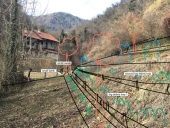posted 10 years ago
Hi Stephen,
I'm not sure what you have in mind here. The idea of nonhazardous management of pests starts out to be of interest to me, but in the permaculture model I understand, I seldom think along the lines of identifying a pest, and targeting it for eradication or "control". Further, much of what is now allowed for use by certified organic growers can be highly toxic with broad spectrum killing capabilities.
Plant "pests", aka "weeds", are indicators of particular conditions in the soil, or mineral excesses or deficiencies, presence or absence of given amounts of moisture. That is valuable information, and if I know what the plant is indicating, the knowledge would help me understand how to support the system's transition to my desired conditions.
I am often apt to rethink the situation and figure out how I can capitalize on the abundance of the element that is going a direction different that my chosen direction, and at the same time steer in my desired direction.
So in a sense, that's a very wordy way to not say "pest" or "weed" or "control", but it's also a way to guide my mental process away from the black white thinking of pest not pest, and the control of the identified pest. What good is it to try to remove a pest from a system, rather than considering all the conditions that contribute to the proliferation of that element in the system. If I am able to remove a pest from a system, a void will have been created, and an organism or combination of organisms will occupy the vacated niche, which likely leads to another attempt to remove another element from the system. My attention, energy and resources get devoted to removing elements, instead of adding elements and nurturing systems towards productive homeostasis.
Maybe the course you are proposing is ways to read the presence of indicator species, and ways to steer the progression towards the balance the farmer wants, and ways to tweak the systems one way or another. That I would find interesting.
I'd like to know what plants indicate what mineral presences or absences, compaction, anaerobic conditions, fungi to bacteria ratios.
I'd like to know what strategies would address the conditions indicated by the indicator species.
I'd like to know if there is a time estimate for how long it takes to get through a particularly trying stage.
Example: in the case of yellow star thistle, many people spray it with round up, and many plow it in several times in a growing season. Herbicides create herbicide resistant strains of yellow star thistle. Disturbing the soil creates the conditions that favor the germination of yellow star thistle. So, what if I DON'T till, or apply herbicides. What if I devote my efforts and resources to the development of a tight covering of perennials, so that there is no disturbed soil where the annual yellow star thistle can germinate. How long will this process take, how long has it taken for others in what conditions? Because I really want to know how many years I'll have to listen to the neighbors tell me what to do about the yellow star thistles before at last, I don't have them any more, despite the millions of seeds being delivered to my soil from my neighbors properties.
So, are you proposing a class like that?
Thanks
Thekla
Best luck: satisfaction
Greatest curse, greed







